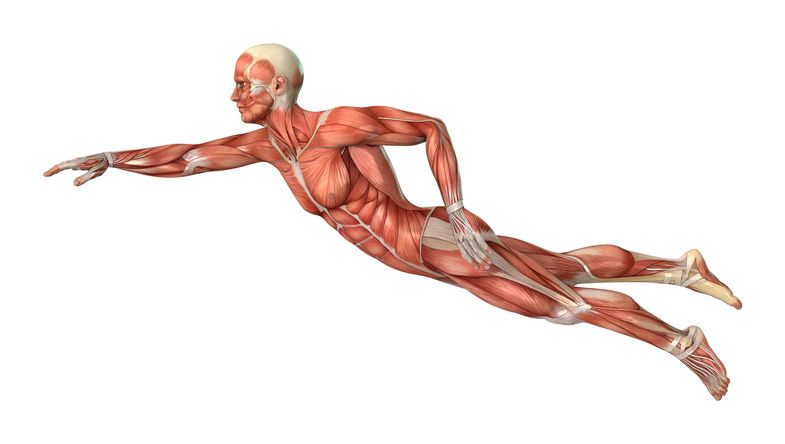Here’s What You Need to Know About the Physics of Swimming

The laws of physics dominate the world around us, but we usually don’t go about our day contemplating the effects of gravity, momentum, and acceleration. But if you want to become a faster, more agile swimmer, it may be time to start taking a closer look at physics.
Check out our guide to the physics of swimming to learn more about what causes frontal drag, how to reduce water resistance, and more about how swimming relates to science.
Which Law of Motion Explains Swimming?
All laws of motion can be related to swimming in some way, but it’s key for every swimmer to start with Newton’s First Law of Motion.
The First Law of Motion
This law states that an object at rest will remain at rest unless acted upon by an unbalanced force.
In relation to swimming, this means a resting body wants to stay at rest, and it takes energy to get moving. Newton’s First Law of Motion is manifest in the way that swimmers must jump or push off the side of the pool to get going.
The Second Law of Motion
The Second Law of Motion states that force = mass x acceleration. This means that if two swimmers of the same mass (weight) push off the wall at the same time but do not make any strokes, the one who used the most force will go the farthest. This person had greater acceleration, and therefore exerted greater force. Newton’s second law explains why some swimmers are faster than others.
The Third Law of Motion
Newton’s Third Law of Motion states that for every action, there is an equal and opposite reaction. Thus, swimmers must stroke downward in the water to stay afloat and propel forward. This movement is equal and opposite to the force the water exerts against the swimmer to stop them from moving.
What Does Swimming Have to Do with Science?
Science can explain just about every aspect of swimming. We’ve already discussed how Newton’s Laws of Motion relate to swimming, and there are many other scientific principles that relate to swimming, too.

For example, science can explain the reason swimmers float (because water pressure pushes upward and balances the weight) and the reason why it’s important to conserve momentum (because the momentum you give your body is the same momentum you give the water).
Swimmers who have a deep understanding of swimming science will have a leg up on their competitors, since they can use these principles to hone their craft. Science can help swimmers be more efficient and learn how to better use their energy.
What Causes Drag in Swimming?
Humans face resistance from the air when walking around going about their normal day, or when playing sports like soccer or baseball. This resistance is usually undetectable, unless it’s a particularly windy day.
Clearly, air resistance is not nearly as strong as the resistance swimmers face in water. In fact, water is 784 times more dense than air, so the human body faces far more resistance swimming than in walking or running.
There are four elements that cause frontal drag in swimming: the swimmer’s position, surface area, swim gear, and speed.
How Do Swimmers Reduce Water Resistance?
The faster a person swims, the stronger the frontal drag becomes. This makes proper swimming technique even more crucial as swimmers become stronger and faster.
Swimmers can reduce their frontal drag by learning how to optimize their position, surface area, swim gear, and speed. For example, a swimmer at an angle will face much more resistance than a swimmer who is in a horizontal position.
Here are other tips on reducing water resistance in swimming:
- Perform regular core exercises to help keep the body aligned while swimming
- Keep the head down to reduce surface drag and keep the body aligned
- Keep the elbow close to the surface
- Wear the newest, most innovative racing suit to reduce friction while moving through the water
- Shave body hair
- Get into a tight streamline when starting and turning
- Keep a tight kick
- Wear two swim caps
- Point toes when entering the water
Check Out SwimJim Today
Do you want to become a better, faster swimmer? Check out SwimJim today. No matter your age or level of experience, our expert swim teachers are ready to help you improve your technique and get even more enjoyment out of swimming. Sign up for a class at SwimJim today.
The post Here’s What You Need to Know About the Physics of Swimming appeared first on Swim Jim.







